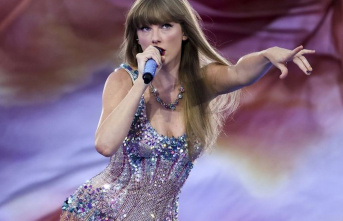In 2021, Drake, Doja Cat, and Justin Bieber each placed six songs—including their own and collaborations—on Billboard's Hot 100 chart. These three, along with Olivia Rodrigo, Ariana Grande, Megan Thee Stallion and The Weeknd have placed one out of every three songs on this prestigious list. That same year —but on the big screen—, Spiderman: No way home became the highest grossing film of the year, both in the US and worldwide. The Marvel Cinematic Universe (UCM) once again placed another of its franchises at the top of a ranking full of prequels, sequels, spin-offs, remakes, reboots or parts of a cinematic universe: from the list of films that most have grossed in American box offices, only Free Guy and Encanto were last year outside that definition.
Pop culture, the mainstream, the one that generates the most income by reaching the widest audience, has a formula for success and it is concentrated in fewer and fewer hands, as shown by a study by the Columbia Business School. This phenomenon happens in all fields, to a greater or lesser extent: either forcefully in music or on the screen —both on the small screen and on the big screen— and more subtly in literature or even in video games.
One of the most obvious examples arises when looking at the big blockbusters in the cinema. The number of films that get to raise more money that are not part of something previous is decreasing. The only two cases from 2021 already cited that fell out of the norm are the same number that reached the top in 2019, before the pandemic: then, only Once Upon a Time... In Hollywood and Us were unique films and original, not part of something earlier.
Since 2000, this phenomenon has represented more than 40% of the highest-grossing films, while since 2010 —two years after the birth of the MCU with Ironman— they have been more than 50%. The phenomenon has not stopped growing, and is now very close to representing 100% of the highest grossing lists.
https://datawrapper.dwcdn.net/PnmL4/6/
In the music sector, Drake and Taylor Swift were, until 2021, the Ironman and Captain Marvel of the most mainstream industry. With 163 and 110 different songs placed respectively on Billboard's Hot 100 lists —which compiles the biggest hits of each year in the US—, they have destroyed the numbers that the Rolling Stones (57), Elton John (64) had. and the Beatles (69). And they are not the only ones.
As the data studied by analyst Azhad Syed shows, oligopoly is also the norm in the most successful music industry. Fewer and fewer musicians are placing their hits in the rankings. In addition, this situation of less competition leads each artist to place more songs on them than they did before: in the 90s, each artist added an average of 1.3 songs to the list; in the first decade of the 21st century, 1.5; and in the 10, more than two.
“There has never been as much music published as now,” says Nacho Ruiz, director of the Make It Happen module at the IMB International Music Business School, musician and director of the Mont Ventoux label and Festival Brillante. Not only are release records broken every week, but that causes a "funnel effect in which some new releases cancel each other out and we end up listening to the same amount of music as always". In addition, this overproduction among the most successful artists is on the rise, since "it is much more expensive to develop artists than to bet on the consolidated ones," Ruiz points out, although "in the long run it turns out to be counterproductive because it cultivates a throwaway culture that prevents artistic development. “David Bowie had a very hard time achieving success. In an industry that promotes only the immediate, we would have missed it.”
In an environment in which the prescribers have been replaced by an algorithm, ordinary citizens do not listen to what they want, but "what they dictate to us", laments Ruiz: "The artists with the greatest marketing capacity and influence, followers and favor of the algorithm end up turning inexorably into success”. For this reason, and to feed the insatiable hunger for immediacy of said algorithm, a constant musical production is necessary to “constantly impact the audience”. "It is published so much that if you are not there, you disappear from the collective imagination." This trend continues to grow rapidly, leading the charts to homogenize not only names, but also musical styles.
In the US, the publishing sector is also following the same path as the rest of pop culture. In the American literary market, the lists are increasingly dominated by phenomena of literary sagas —such as the posthumous successes of Stieg Larsson and his 'The Girl with the Dragon Tattoo' or Fifty Shades of Grey—, reunions with the past —the publication of a book ('Go Set a Watchman', by Harper Lee) in 2015 puts another by the same author but older (To Kill a Mockingbird, 1960) at the top— or authors increasingly more prolific.
The data shows that while it used to be quite rare for an author to have multiple top 10 books in the same year, it has happened almost every year since the 1990s. No author had had three top 10 books in a year until Danielle Steel did it in 1998. In 2011, John Grisham, Kathryn Stockett, and Stieg Larsson each had two books.
This pattern, however, is not shared by the Spanish publishing sector, in which "there is more room for surprises and newcomers, they are numerous and always well received," says Marc Rocamora, director of Marketing and communication of the division editorial of Grupo Planeta. “We have many examples on the fiction best-seller lists, in authors such as María Oruña, Alice Kellen or La Vecina Rubia who have already become publishing phenomena, or Eva García Sáenz de Urturi herself, whose takeoff is relatively recent and who Today it continues to conquer thousands of readers.”
“It is possible that this concentration has taken place in the North American market. In Spanish it is not true”, according to Antonio Mª Ávila, executive director of the Federation of Publishers Guilds of Spain. “The famous author always comes out with a plus, but that doesn't prevent other types of authors from coming out. The system prevents you from this oligopoly —Avila points out—, because everyone publishes. With the number of novelties and editions, one or two new ones will play the key one year, apart from those already consecrated—”.
As in the publishing world, audiovisual consumption on the small screen cannot be compared in Spain with that in the United States. The disparity of the television model, with the power of cable in the US and multi-platform consumption governed by Netflix, Prime, HBO and company in Spain, makes it impossible to extrapolate the trend towards oligopoly in the American country with the situation in our country.
Television consumption in the United States follows the same pattern as that marked by the big screen. Reruns and relaunches of old formats, as well as sequels and prequels to series, shows and programs broadcast multiple times on different days of the week or spin-offs of other series, increasingly dominate the American audiovisual scene.
The pattern is repeated in all sectors of pop culture. In video games, a highly globalized sector, franchises categorically dominate the panorama of success. Since 2005, up to five times they have come to dominate the entire list of the best-selling video games, part of a broader group such as Mario, Zelda, Call of Duty or Grand Theft Auto.
The entertainment market will continue to exploit the formula for success and look for more variants of it. Despite this, the fact that the large amounts of money, audience and viewers continue to fall on fewer and fewer names will push the situation towards an acceleration of this oligopoly.
4












